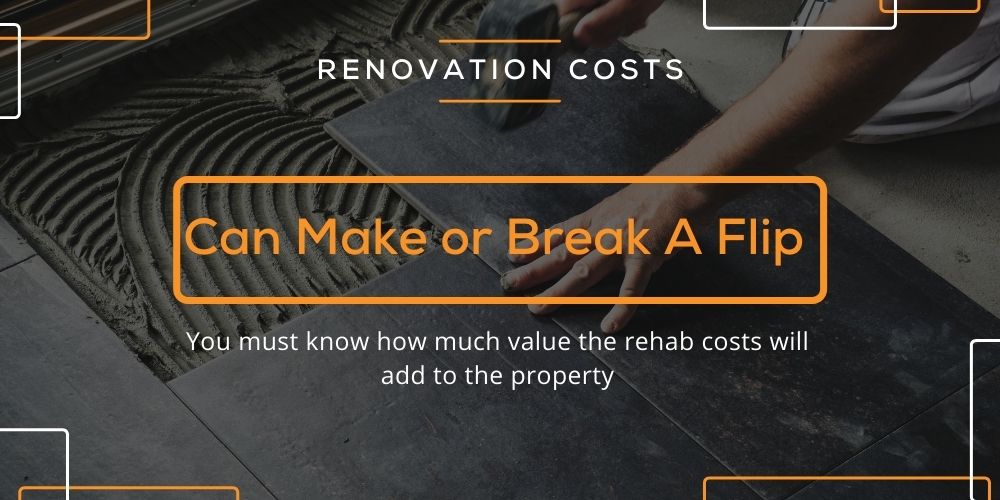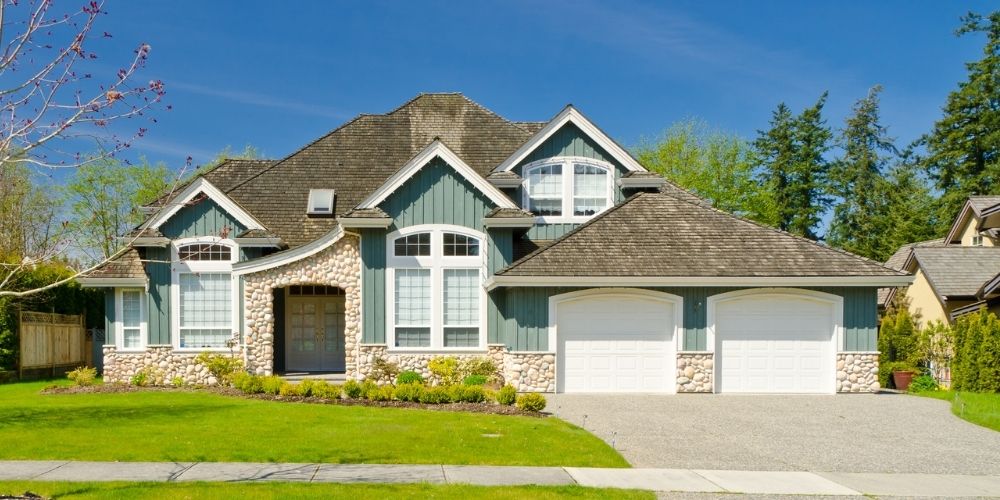Flipping houses is a lucrative business if you’re willing to put in the work. But it’s important to do your research and crunch the numbers before jumping into anything, so you can be sure that you have a profitable investment property on your hands. Here is a full cost breakdown of an average house flip, so you can start creating a budget.
Purchase Price

The purchase price is likely the largest investment you’ll likely make during the property flipping process, so it’s important to analyze the numbers carefully. The better the deal you can secure on the purchase price, the more profits you’ll make at the end of the flip. So you should study the market carefully and do your homework if you want to snag a good deal.
The general rule of thumb for finding a property that will make a profitable flip is the 70% rule . The 70 rule in house flipping means you calculate the after-repair value (ARV) and secure a home for 70% or less of that price minus repair costs. The after-repair value refers to the price a home should sell for if it’s renovated to meet the market standards.
You can determine this number by collecting comparable sales data from similar properties in the neighborhood and compiling it to create a reasonable average of what the home should sell for under normal market conditions. You can consult with a broker to help pull comps and determine a realistic ARV if you’re unsure of how to go about it on your own. You can also use New Silver’s free ARV Calculator.
Maximum Offer Price = After Repair Value * 70% – Repair Costs
So, if a home should sell for around $400,000 in good condition and you estimate that the repairs will cost an additional $50,000, you can use that formula to determine a smart offer.
Max offer = $400,000(.70) – $50,000 = $230,000
So, in that scenario, you should look for a property that is being offered for $230,000 or less. This will give you enough of a cushion so that even if the repairs are more expensive than you originally estimated or there are other unexpected fees, you can still walk away with a decent profit (within reason).
Closing Costs
Also keep in mind that you will have to pay any closing costs related to the purchase as well. Unlike wholesaling , when you flip a home you are actually accepting ownership of the property for a period of time, so you’ll have to pay any costs associated with owning the property or transferring the title. These costs include broker fees, legal fees, title fees, insurance, loan origination fees, and so on.
Closing costs typically range from about 3%-6% of the cost of the home – so just make sure you leave enough room in your budget to account for these additional fees.
Rehab Costs

The second biggest investment in a fix and flip is the repair cost. This includes all the costs of material and labor it will take to get the property up to acceptable market standards. It’s also very important to carefully analyze the rehab costs before making an offer, because additional expenses will eat into your profits if you don’t budget carefully. Things happen during the construction process, so you should always add an extra cushion to your rehab budget to account for any delays or additional materials being needed. But if your estimate is way off and you end up spending far more than your budget allows, you’re either going to lose profits or have to sell at a loss.
Common rehab costs include:
- Building materials: lumber, drywall, concrete, flooring, countertops, hardware, etc.
- Appliances: new refrigerator, microwave, dishwasher, washer/dryer, etc.
- Professional labor: General contractor, plumber, electrician, handymen, etc.
- Cosmetic repairs: paint, carpet, flooring, light fixtures, cabinet hardware, etc.
- Landscaping: Mowing the lawn, trimming bushes, planting flowers or trees, etc.
The exact costs of the rehab will vary depending on the condition of the home when you purchased it and what is standard in the area. You could even go above and beyond and add a whole new wing to the home or install a swimming pool to increase buyer attention. But you’ll have to carefully analyze the costs against the final home value to determine if it’s a good investment. You can use a rehab calculator to analyze the costs, as well as consult with your broker and general contractor to determine a reasonable estimate.
Carrying Costs
- Financing costs
- Property tax
- Insurance
- Utilities
Also called ‘holding costs’ these will vary depending on your financial strategy when flipping homes. Although it is possible to flip a home with a mortgage loan, it’s not recommended. A mortgage is typically a long-term loan and there are often early repayment penalties that will eat into your profits. Also, most banks will automatically decline house flipping loan applications.
Most investors tend to look for different types of financing options such as hard money loans. A hard money lender can provide short term funding, even for high-risk house flipping deals. Their underwriting standards typically aren’t as rigorous as a conventional mortgage, but they will charge a higher interest rate for borrowing the capital.
Of course, you could find a private lender and negotiate your own terms or pay all the cash if you have the capital on hand. But you’ll still have to factor in any taxes, insurance, or utilities owed during the renovation process.
This is why it’s important to create a plan of action and develop a strict timeline for completing necessary renovations so you don’t get delayed and let these costs eat into your profits.
Ultimately, your budget should allow for holding costs that equate to 10 – 15% of the project cost.
Selling Costs
While the underlying goal is to sell the house for the maximum price possible, you will run into selling costs when completing the sale of the home. The real estate agent fee is typically the largest of the selling costs, while legal fees and staging costs can also add up to a substantial number.
When completing your house flipping budget, budgeting 3-6% for selling costs is generally a good idea. It could be higher or lower in certain circumstances, but for most house flipping projects, 3-6% should provide a reasonably accurate estimate.
Other Fees
Also, keep in mind that there may be other miscellaneous fees that come up during the flipping process. This includes marketing fees for hiring a broker or advertising directly to buyers, buying meals for your workers, upgrading appliances or building features, acquiring building permits, and so on. Transfer tax is another expense to watch out for, depending on what state you live in. That’s why it’s smart to have a modest cash reserve stashed away for any unexpected costs, so you don’t have to go into the red.
Flipping houses is far from easy and requires patience and careful planning to make a profit. But, if you take the time to crunch the numbers and create a solid action plan, you’d be surprised at how smoothly the process can go.



